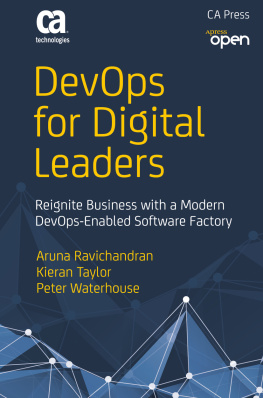Ravichandran - How to Inspire
Here you can read online Ravichandran - How to Inspire full text of the book (entire story) in english for free. Download pdf and epub, get meaning, cover and reviews about this ebook. year: 2017, publisher: Penguin Books Ltd, genre: Romance novel. Description of the work, (preface) as well as reviews are available. Best literature library LitArk.com created for fans of good reading and offers a wide selection of genres:
Romance novel
Science fiction
Adventure
Detective
Science
History
Home and family
Prose
Art
Politics
Computer
Non-fiction
Religion
Business
Children
Humor
Choose a favorite category and find really read worthwhile books. Enjoy immersion in the world of imagination, feel the emotions of the characters or learn something new for yourself, make an fascinating discovery.
- Book:How to Inspire
- Author:
- Publisher:Penguin Books Ltd
- Genre:
- Year:2017
- Rating:3 / 5
- Favourites:Add to favourites
- Your mark:
- 60
- 1
- 2
- 3
- 4
- 5
How to Inspire: summary, description and annotation
We offer to read an annotation, description, summary or preface (depends on what the author of the book "How to Inspire" wrote himself). If you haven't found the necessary information about the book — write in the comments, we will try to find it.
How to Inspire — read online for free the complete book (whole text) full work
Below is the text of the book, divided by pages. System saving the place of the last page read, allows you to conveniently read the book "How to Inspire" online for free, without having to search again every time where you left off. Put a bookmark, and you can go to the page where you finished reading at any time.
Font size:
Interval:
Bookmark:



PENGUIN BOOKS

In this short note, we present the relevance of inspirational speeches in the context of organizations, communities and societies. Often, inspirational speeches are used by leaders of communities, societies and organizations to set the agenda of action. The ability to conceive, craft and deliver inspirational speeches is an important personality trait of leaders. In this note, we set the context and identify several structural constructs by which inspirational speeches are crafted.
Oral and written communication plays a vital role in the context of families, social groups, communities, organizations and societies. Often, communication is the only means to set goals and objectives, prioritize an action plan and involve stakeholders in accomplishing the stated objectives. Leaders consistently use effective communication to persuade, motivate and inspire stakeholders. Based on historical evidence, it is evident that inspiring communication has the potential to transform the lives of individuals, improve the status of communities and change the trajectory of nations.
Persuasion-based communication is often used to change or incrementally modify the position assumed by a stakeholder. The primary objective of persuasive communication is to reduce the negative perceptions about the subject matter and inject a sense of positive orientation in the thinking of individual stakeholders.
Motivation-based communication is developed within the framework of win-win situations. It usually highlights the importance of modifying or changing the stated positions of stakeholders individually or collectively. The merits of adopting a preferred action agenda is the central theme of the communication. Motivational communication is aimed at accomplishing an overall, win-win and positive outcome in the context. Communications based on an appropriate motivational pitch can bring about a rational and meaningful transformation in the attitude and performance of the individual stakeholders.
At the other extreme, inspirational communications have the potential to bring about radical changes in the context (at the level of the individual, the community and the organization). History is full of such examples and there is no need to repeat or recollect them in this short note. Needless to say, inspirational communications can provide the much-needed spark to transform and/or revolutionize a non-action-oriented group to an aspirational action-oriented team. In that sense, inspirational speeches can set and shape the transformational agenda of stakeholders and hence enable the transformation of organizations and communities.
In the main segment of this note, we infer some attributes of crafting inspirational speeches based on the empirical evidence of about two dozen convocation addresses delivered in premier management institutions in India during 201415.
By nature, the convocation of a graduating class is an appropriate and apt occasion to inspire young minds. The audience is a group of accomplished individuals who are waiting to begin young professional lives. The event is characterized by a ceremonial orientation. The speaker in the convocation is invariably an accomplished individual in the Indian and global context. The information, advice and insights that the speaker shares with the graduating class are not from textbooks and are predominantly based on personal experience. Therefore, the credibility, authenticity and genuineness of the contents of the address are high.
The graduating class, which is yet to begin the celebrations recognizing the fruits of their hard work, is in a state of accomplished equilibrium. They are open to advice and suggestions, and willing to consider and experiment with new guidelines before they begin their professional life. Based on these perceptions, it is evident that convocation addresses are delivered in the most optimal conditions to make a meaningful impact on a group of accomplished young individuals.
This note is not a commentary on the addresses included in the compilation. It merely uses the addresses to infer some insights related to crafting inspirational speeches. We believe such insights related to the design and delivery of inspirational speeches would enable the younger generation to appreciate the efforts involved in these speeches and use them appropriately in their professional and personal lives.
Inspirational speeches (as evidenced by the collection in this volume) are characterized in generic terms by the following attributes:
- They motivate the audience by recognizing their accomplishments and placing the event in the context of the organization, economic environment and nation.
- They clearly compare and contrast the opportunities related to wealth creation at the time the younger generation is joining the workforce with the opportunities at the time the speaker had joined the workforce.
- Addresses are based only on personal anecdotes. Accordingly, they make an impact with the audience and provide a connect. This is reinforced by the societal stature of the speaker.
- The dominating theme of the speech is optimism. The addresses succinctly capture the evolution of the opportunities of wealth creation and societal impact in the geographical context. The speeches draw the attention of the audience to the challenges at the macro and micro levels.
- The content of the speeches vary from scholarly discourses to personal advisories and storytelling, depending on the personality of the speaker.
- A detailed attempt is made to sketch the landscape of opportunities for wealth creation and social impact. However, the dominant theme is to suggest that the members of the audience explore new employment creation opportunities (entrepreneurship).
- For motivational purposes, speakers often highlight the accomplishments of the institution which is hosting the event and provide a set of deeper thoughts for contemplation, and hence enable the young minds to plan and shape the future.
- Routinely, the speeches emphasize on doing good for society, and the need and criticality of maintaining the highest standards of personal integrity.
- The speeches are sprinkled with personal anecdotes, individual experiences, observations, learning and inspiring stories to drive home a message.
- The speeches usually deal with the contemporary issues related to economic growth, wealth creation opportunities, the transformation power of IT, entrepreneurship, the growth of the consumer class, the demographic dividend, environmental concerns, social harmony, work-life balance and so on.
- Speeches are a judicious mix of appreciating accomplishments, outlining the landscape of opportunities, providing motivation to explore and take risks, reassurances based on personal anecdotes that doing good is effective in the long run, and specific advisory comments.
- The speakers lifelong learning is the core of the address. The thrust of the address is positive motivation.
While the attributes listed above are drawn from the sample of speeches included in the volume, they can be used as a general guideline in crafting inspirational speeches.
Professor, production and quantitative methods area, Indian Institute of Management Ahmedabad.
Font size:
Interval:
Bookmark:
Similar books «How to Inspire»
Look at similar books to How to Inspire. We have selected literature similar in name and meaning in the hope of providing readers with more options to find new, interesting, not yet read works.
Discussion, reviews of the book How to Inspire and just readers' own opinions. Leave your comments, write what you think about the work, its meaning or the main characters. Specify what exactly you liked and what you didn't like, and why you think so.













